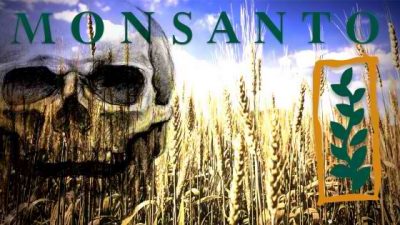Monsanto’s Weed-Killing Carcinogen Glyphosate Found in Children’s Foods

Note to readers: please click the share buttons above
The known carcinogen and infamous weed killing chemical glyphosate has just been found in breakfast foods marketed for children. A new study has discovered trace amounts of the most widely used herbicide in the country in oats, granolas, and snack bars.
Concern over glyphosate has continued to grow in the United States in recent years. Although the chemical may be safe in some amounts to spray on weeds if certain safety precautions are taken, it is probably a lot more dangerous if it’s ingested by a child. Most disturbing, however, is the fact that thirty-one out of 45 tested products had levels of glyphosate that were higher than what many scientists consider safe for children.
The study, which was conducted by the non-profit Environmental Working Group (EWG) found that many of the breakfast foods marketed to children contain glyphosate.
“I was shocked,” said Dr. Jennifer Lowry, who heads the Council on Environmental Health for the American Academy of Pediatrics. Although not much is known about the effects of the chemical on children, parents and doctors are concerned. “We don’t know a lot about the effects of glyphosate on children,” Lowry said. “And essentially we’re just throwing it at them.”
“We’re very concerned that consumers are eating more glyphosate than they know,” said Scott Faber, vice president of government affairs at EWG, according to CBS News. Faber has been working to improve food safety standards for more than a decade. He said he and his team at EWG conducted the study which included a lab test involving “45 samples of products made with conventionally grown oats.”
The researchers found glyphosate, which is the active ingredient in the Monsanto weed-killer Roundup, in all but two of the products.
EWG used it’s own very stringent standards of safe levels of glyphosate when testing the products, which should also be noted. Because of that, in response to EWG’s study, Monsanto said, “even at the highest level reported… an adult would have to eat 118 pounds of the food item every day for the rest of their life in order to reach the EPA’s limit” for glyphosate residues. Just last week, in fact, a jury in California ordered Monsanto to pay one man $289 million in damages after his lawsuit claimed the company’s weedkillers caused his cancer. EWG’s Faber is skeptical of EPA’s glyphosate limits.
The World Health Organization says glyphosate is a “probable carcinogen,” and California lists it as a chemical “known to the state to cause cancer.” Monsanto continues to dispute the claim that the chemical is carcinogenic, saying in a statement, “glyphosate does not cause cancer” and “has a more than 40-year history of safe use.”
As the debate over glyphosate’s safety continues, it isn’t likely to see tests on the stuff cease anytime soon. And Faber isn’t the only person concerned over its possible carcinogenic effects.
“It is time now for them to step up and do their jobs to ban glyphosate,” said Zen Honeycutt, who heads Moms Across America, a group formed to raise awareness about toxic exposures. “We want to trust that what is in the grocery store is safe and the shocking reality is that in many cases it’s not,” Honeycutt said.
*
Featured image is from the author.

